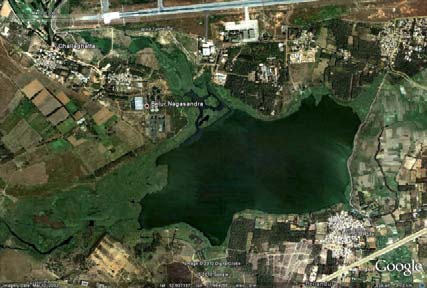/topics/contamination-pollution-and-quality
Contamination, Pollution and Quality
Workshop on Bhuvan: Gateway to Indian Earth Observation visualization – Indian Space Research Organisation (ISRO), 26th March, 2011, Pune
Posted on 21 Mar, 2011 01:49 PMOrganizers:
- Indian Space Research Organisation (ISRO)
- Pune University
Venue: Pune University, Pune
High fluoride incidence in groundwater and its potential health effects in parts of Raigarh district of Chhattisgarh – A paper in Current Science
Posted on 21 Mar, 2011 06:45 AMFluoride (F) is harmful to human health and knowledge of spatiotemporal distribution of F content in groundwater is thus a prerequisite for taking preventive measures.
Vicious cycle of fluoride in semi-arid India – A health concern – A paper in Current Science
Posted on 20 Mar, 2011 09:10 PMMore than 16 states in India are facing the fluorosis problem. Several southern-peninsular states are experiencing monsoon climate condition, where the rainwater is harvested through tanks and used for agriculture.
Plan to make major rivers pollution-free under the NRCP - PIB release
Posted on 18 Mar, 2011 02:49 PMIt covers identified polluted stretches of 39 rivers in 182 towns spread over 20 States. The major rivers covered under the Plan include Ganga, Yamuna, Gomti, Damodar, Satluj, Krishna, Musi, Cauveri and Godavari besides others. Pollution abatement schemes are taken up under the Plan on a cost sharing basis between Centre and States.
Water jobs via DevNetJobsIndia.org dated 10th March, 2011
Posted on 10 Mar, 2011 11:36 AMContent Courtesy: DevNetJobsIndia
- Water Quality Consultant
WSSO recruitment by IMaCS
Location: Patna
Last Date: 15th March, 2011
"New Water Policy by 2011" - Droplets
Posted on 09 Mar, 2011 05:46 PM
- New Water Policy by 2011
Nine years after the last document, work is on to put in shape a new water policy for India that will by the end of the year not just lay down a framework for the allocation of water but also take into account the impact of climate change and the remedial steps that need to be taken.
- Japan will extend Rs 2,557 Crore aid
Japan is to extend an aid of Rs. 2,557 crore to India for three projects through its Overseas Development Assistance (ODA) window. The projects pertain to cleaning the river Yamuna in the national capital Delhi, crop diversification promotion in Himachal Pradesh and biodiversity conservation and greening in Tamil Nadu
Lakes of Mahadevpura constituency of Bengaluru: Current status, changes in distribution and recommendations for restoration - A report by ATREE (2011)
Posted on 02 Mar, 2011 09:18 AM The lakes are now faced with the impacts of rapid urbanization and the Bruhat Bengaluru Mahanagara Palike (BBMP) has been consolidating management of the majority of the city’s lakes under its control in the recent years. The survey dealt with 35 lakes in 10 sub chains in Mahadevpura. The report describes current status, studies changes in extent, and suggests steps for reclamation and conservation.
The lakes are now faced with the impacts of rapid urbanization and the Bruhat Bengaluru Mahanagara Palike (BBMP) has been consolidating management of the majority of the city’s lakes under its control in the recent years. The survey dealt with 35 lakes in 10 sub chains in Mahadevpura. The report describes current status, studies changes in extent, and suggests steps for reclamation and conservation.
Co-processing of distillery spent wash concentrate in cement industry – Inviting comments on the draft guidelines by the Central Pollution Control Board (2010)
Posted on 01 Mar, 2011 09:48 PMIn order to utilize the hazardous wastes generated in the cement industry the Central Pollution Control Board has come up with the draft guidelines (in February 2010) dealing with the co-processing of distillery spent wash concentrate in the cement industry.
Kerala's bill to penalise Coke - Relief and compensation for Plachimada factory victims
Posted on 01 Mar, 2011 02:39 PM'The Bill proposes to get compensation from the company and to form a tribunal to provide time-bound compensation. The tribunal is to have a chairman, a technical member and an administrative member'.





